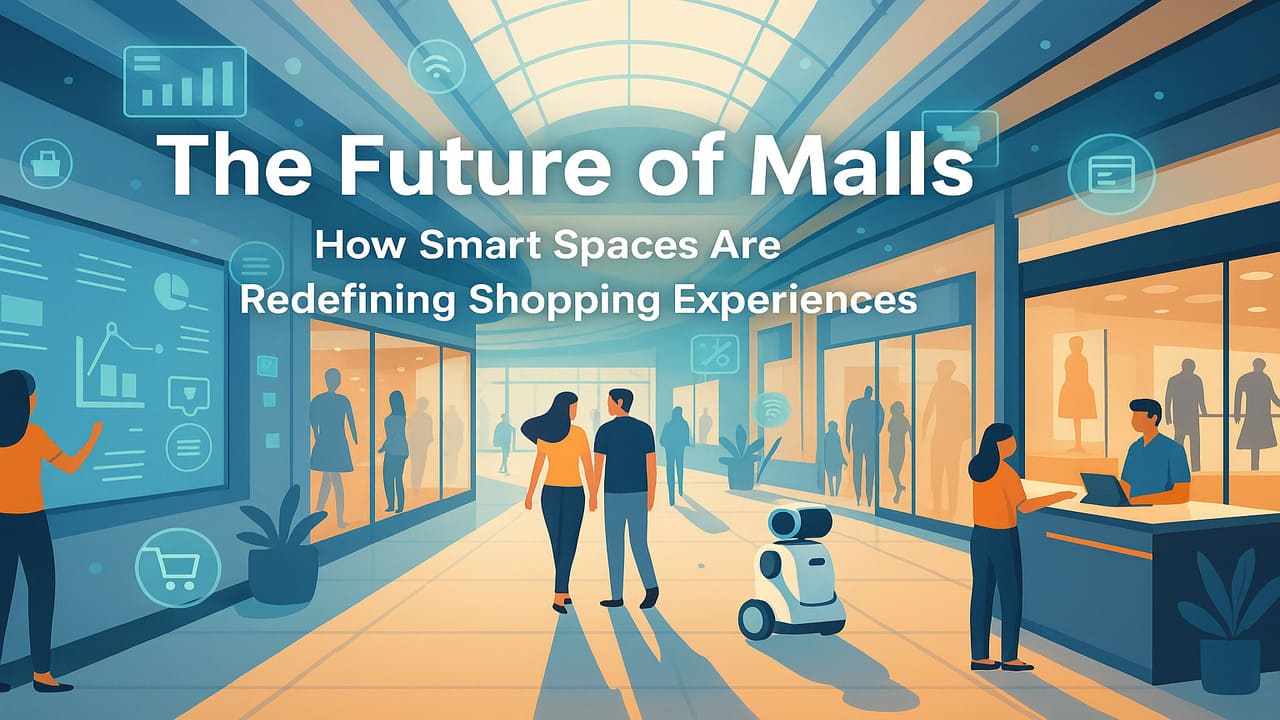
The Berkshire Mall – The image of a mall has changed drastically in the last decade. Once dominated by rows of retail stores and food courts. Malls are now transforming into dynamic smart spaces designed to meet the evolving habits of modern consumers. The traditional mall is no longer just a place to shop it’s becoming a space to connect, experience, create, and even heal. Driven by advances in technology, shifts in consumer behavior, and the need for more sustainable and adaptable architecture. The Future of Malls is less about shelves and checkout counters, and more about immersive experiences and multifunctional environments.
Malls are no longer simply “shopping centers.” Instead, they are being reimagined as lifestyle hubs that blend commerce with culture, health, education, and entertainment. This evolution has been fueled by the rise of e-commerce, which has prompted brick-and-mortar spaces to redefine their value proposition.
Smart malls are increasingly integrating fitness studios, coworking spaces, wellness clinics, digital art installations, and indoor parks into their architecture. For example, a customer might drop off their kids at a STEM learning zone, attend a yoga session, explore a VR fashion gallery. And enjoy lunch at a farm-to-table restaurant all within the same facility.
Read More : Smart Lighting Revolution: Boosting Office Productivity
One of the key features of tomorrow’s malls is intelligent technology integration. From smart mirrors that let customers try on clothes virtually to facial recognition at entrances. Technology is at the core of the future shopping experience.
Smart malls also use IoT (Internet of Things) to monitor foot traffic and adjust lighting, music, and even temperature based on visitor patterns. Digital signage changes in real-time based on demographics and behavior data, providing personalized promotions and directions.
Some malls are implementing AI-powered concierge services interactive kiosks or mobile apps that assist with navigation, reservations, queue management, and product availability in real time. This tech-centric approach makes every visit more convenient, seamless, and engaging for customers.
The Future of Malls, shopping is no longer passive it’s interactive, immersive, and sensorial. Brands are moving away from traditional retail displays toward experience-based showrooms.
Imagine entering a sportswear store where you can test sneakers on a smart treadmill that analyzes your stride, or visiting a tech store that lets you test drones in an indoor obstacle course. Some clothing brands are already using augmented reality fitting rooms where you can try outfits without physically changing clothes.
These types of experiences add value to in-person shopping that e-commerce cannot replicate, giving customers a reason to return to physical spaces.
Read More : High-Tech Mall: Berkshire Mall Perspective Changing the Way We Buy, Eat, and Connect
As sustainability becomes a key priority, future malls are being designed with green technologies and eco-conscious materials. Expect to see solar panels, rainwater harvesting systems, indoor vertical gardens, and advanced energy management tools.
Smart malls also emphasize modular architecture, allowing spaces to transform quickly for different purposes like pop-up events, night markets, exhibitions, or even hybrid indoor-outdoor festivals. These dynamic layouts enhance flexibility and reduce long-term infrastructure waste.
Many new malls are also focusing on pedestrian-friendly layouts with natural light, open-air zones, and wellness-driven designs that make the environment healthier and more relaxing for all visitors.
Far from being impersonal mega-complexes, smart malls are making a strong effort to reintegrate with local culture and community needs. One way they do this is by offering space for local entrepreneurs, artisans, and startups through curated kiosks and pop-up markets.
Some malls even partner with city councils to host job fairs, art shows, farmer’s markets, and cultural celebrations, turning the mall into a modern-day town square. This approach not only boosts foot traffic but also reinforces the mall’s role as a place of social belonging.
In some regions, malls have gone a step further by offering community health services like vaccination centers, telehealth booths, and mental wellness pop-ups, especially during public health crises.
An exciting emerging feature of the smart mall is robotic assistance. In pilot projects around the world, malls have introduced AI-powered robots that guide visitors, clean walkways, restock shelves, and even deliver food orders to tables or waiting zones.
Some advanced malls are exploring drone-based inventory management and robotic parking systems, allowing for smarter logistics behind the scenes. Meanwhile, self-checkout AI systems and cashless payments using facial recognition or biometric ID are streamlining the end-to-end shopping experience.
These technological shifts are not about replacing people, but rather enhancing customer service and efficiency in ways that delight users and reduce human error.